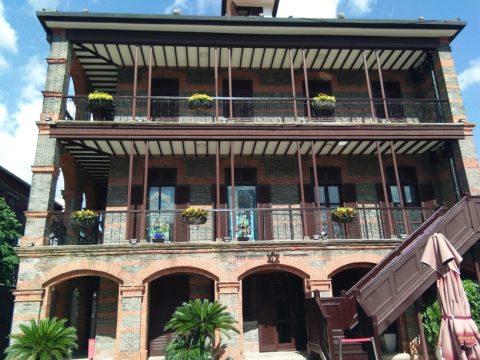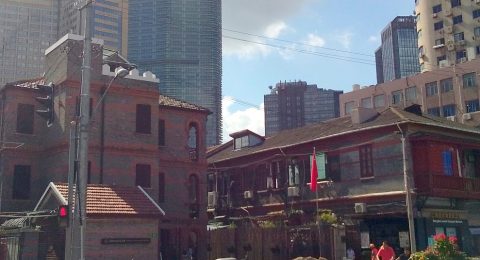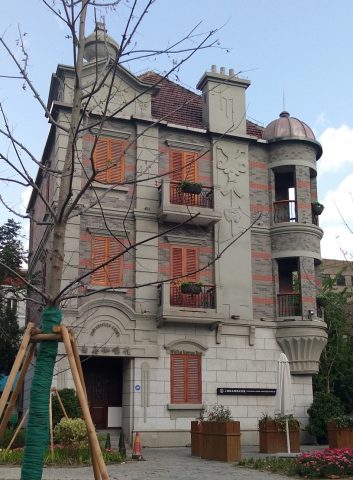Shanghai Ghetto 🤔 The Lost History Of Shanghai’s Jewish District
Shanghai Ghetto 👀 The Lost History Of Shanghai’s Jewish District
You probably know that Shanghai is famous for the Bund, the Pearl Tower, Jing’an Temple, and its other well-known tourist spots.

But for those planning to settle in for longer than a week’s vacation, there are hundreds of historical sites worth spending an afternoon to visit.
Many of these are free or very cheap to visit, a welcome relief from the high ticket prices of the most popular sites!
Today, let’s explore some eye-opening Chinese history in the former Jewish neighborhood in Hongkou district or as it was once referred to the ‘Shanghai Ghetto’ or officially as the ‘Restricted Sector for Stateless Refugees’.
The History of the Shanghai Jewish Ghetto
The History of the Shanghai Jewish Ghetto
During the 1930s and 40s Shanghai’s Jewish community was joined by tens of thousands of Jewish refugees fleeing from persecution in Nazi Germany.
In the earlier stages of the Nazi Regime, Jews in Germany and Austria were stripped of their rights as citizens and were forced to flee.
By the late 1930s the USA and Western European countries had closed their doors to refugees, and Shanghai was one of the few places they could seek asylum. At the time it wasn’t necessary to have a visa to enter Japanese-occupied Shanghai.
Around 20,000 Jewish refugees arrived in Shanghai during this time.
The authorities in Shanghai were unprepared for immigration of this scale, and on arrival the refugees faced harsh conditions in the Hongkou District Ghetto.
In spite of the impoverished conditions, the refugees managed to establish a functioning community.
While the people have moved on, several relics of their presence have been preserved to this day. Head over to Hongkou District to find out more…
How to get to the Shanghai Jewish Ghetto

To get there, take line 12 to Tilanqiao Rd Station (提篮桥路) and go out exit 2.
Head down Dongchangzhi Road (东长治路) for a couple blocks until you arrive at the Shanghai Jewish Refugees Museum (上海犹太难民纪念馆).
The museum is in the former building of the Ohel Moshe Synagogue (摩西会堂). It contains information both on general Jewish history in China as well as on the specific situation of this community.
It is open daily from 9 to 5 and has an entrance fee of 20 RMB. I recommend taking the free English tour, offered in the morning at 9:30, 10:30, and 11:30, and in the afternoon at 1:00, 2:00, 3:00, and 4:00. The tour takes about 40 minutes.
Shanghai Jewish Ghetto – Neighbourhood Tour

Once you’ve finished at the museum, take a walk around the neighborhood to look at other historic buildings.
Across the street from the museum is the White Horse Inn (白马咖啡馆), which was once a happening café.
Unfortunately, the original building was torn down in 2009. A reconstruction stands in its place. The interior is not open to visitors, but the outside is worth a stroll around.
While not related to the Jewish community, the Tilanqiao Prison (提篮桥监狱) just a block down Dongchangzhi Road is another historic site in this area.
Japanese war criminals were held here after World War II. The building is still in use and is also not open to visitors.
To finish off your visit, take the scenic route back to the subway. Cross the street and head south on Zhoushan Road (舟山路), then west on Huoshan Road (霍山路), then back north on Haimen Road (海门路) to get back where you started. This will take you past a number of Shanghai’s ubiquitous “Former site of…” spots, and these streets still show some signs of European influence in their architecture.
Explore Shanghai
That’s it for this hidden gem!
If your appetite still hasn’t been sated, consider taking a weekend trip up to the Song dynasty capital Kaifeng (开封), which has had a Jewish population of at least a millennium.
Be sure to check out Shanghai’s Dumplings after your day exploring the Shanghai Jewish Ghetto.
Check out more of our blogs about Shanghai’s history and places to explore:

History of Architecture in Shanghai
Want to find out more about Shanghai? Then read our blog on a (very brief) history of architecture in Shanghai.

Yu Garden
One of Shanghai’s most famous parks is the beautiful Yu Garden which is home to one of Shanghai’s oldest temples.

Shanghai Library
A must visit for any bookworms out there is Shanghai Library. It’s a great place to find books or to lose yourself reading for a couple of hours.
Shanghai Jewish Ghetto – FAQ’s
What is the nearest Metro Station to the Shanghai Jewish Ghetto?
To get there, take line 12 to Tilanqiao Rd Station (提篮桥路) and go out exit 2.
How much does it cost to enter?
The Shanghai Jewish Ghetto has an entrance fee of 20 RMB.
When does the Shanghai Jewish Ghetto open?
It is open daily from 9am to 5pm.
Can you also take a tour?
Yes you can.
I recommend taking the free English tour, offered in the morning at 9:30, 10:30, and 11:30, and in the afternoon at 1:00, 2:00, 3:00, and 4:00. The tour takes about 40 minutes.
Want more from LTL?
If you wish to hear more from LTL Language School why not join our mailing list.
We give plenty of handy information on learning Chinese, useful apps to learn the language and everything going on at our LTL schools.
Sign up below and become part of our ever growing community.
FANCY LEARNING CHINESE ONLINE? Why not sign up to a 7 day free trial of our Flexi Classes.
![[𝗢𝗟𝗗] LTL Shanghai Logo](https://old.ltl-shanghai.com/wp-content/sites/3/logo-ltl-header.png)





5 comments
[…] Shanghai Ghetto: The Lost History Of Shanghai’s Jewish District […]
Is the subway station far from city center
Hi Daniel,
Not at all! Tilanqiao subway station is about 10-15 minutes away from People’s Square station.
LTL
Excellent article!
Thanks Mart!